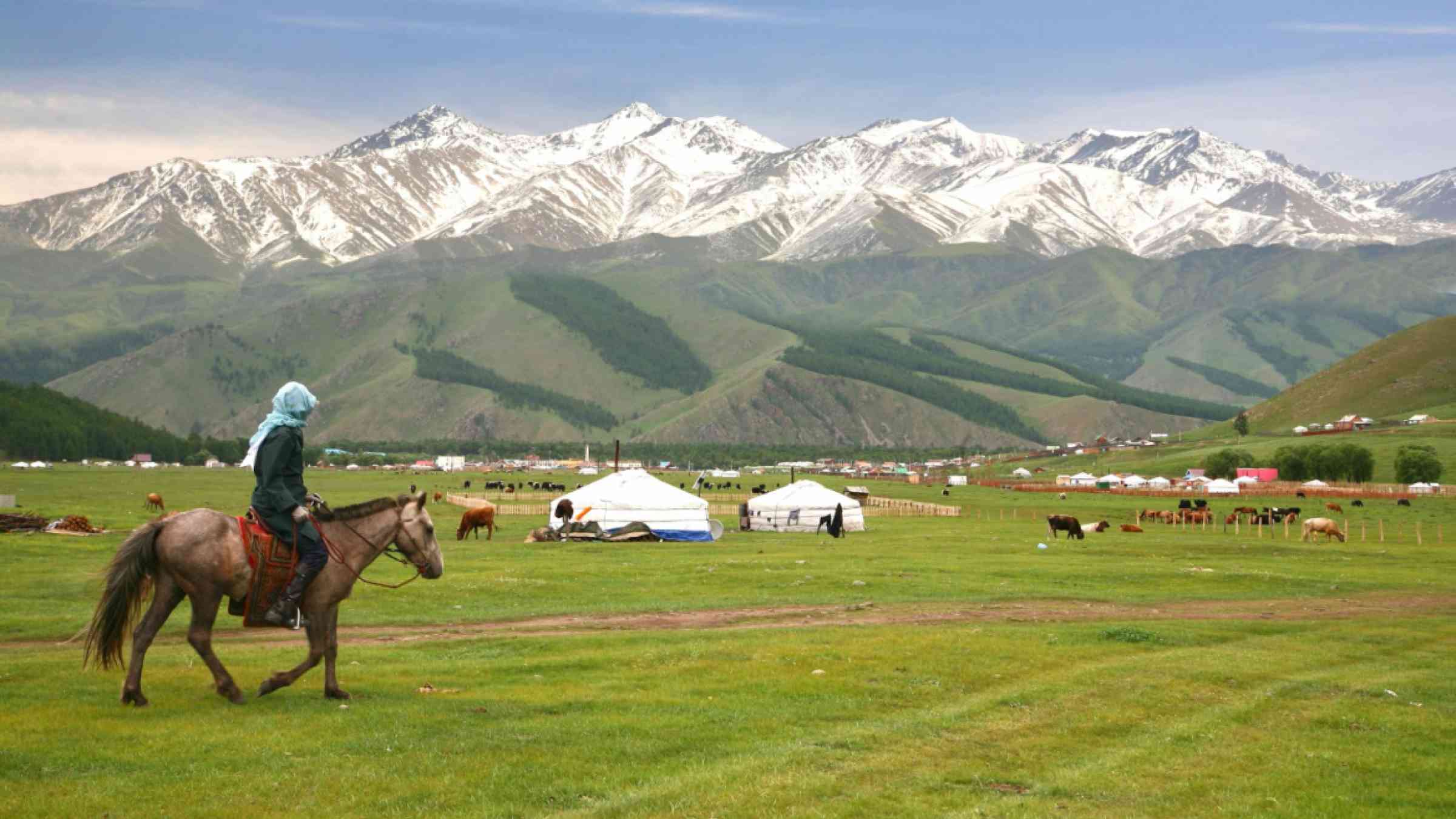Food security, disaster risk assessment and vulnerable communities: Lessons from the Kyrgyz Republic

The Kyrgyz Republic faces unique and significant challenges due to natural hazards, exacerbated by its geographical setting and population demographics.
These risks include mudflows, landslides, avalanches, earthquakes, and extreme temperature fluctuations, which often impact the most economically and socially vulnerable communities.
The Kyrgyz Republic is one of the poorest countries in Central Asia, with approximately 20.1% of its population, or 1.2 million people, living on less than US$1.3 a day. Additionally, 24% of its population experiences moderate to severe food insecurity.
Enhancing disaster risk management capacity
For more than 16 years, the World Food Programme's Kyrgyz Republic Country Office (KGCO) has partnered with both central and local governments to ensure food and nutrition security. Their efforts focus on helping communities cope with crises and disasters, particularly targeting the most vulnerable groups. Leading the initiative inside the WFP KGCO, the Disaster Risk Reduction & Climate Change Adaptation team collaborates with grassroots organizations, NGOs, and other UN agencies to enhance understanding and capacity for managing disaster risks.
In partnership with the Kyrgyz Republic’s Ministry of Emergency Situations (MES), KGCO recently conducted a case study in the Suzak district of the Jalal-Abad region (one of the districts most exposed to disasters). This study, funded by the Swiss Agency for Development and Cooperation, involved collecting data on hazard exposure and integrating it with hazard and vulnerability maps to assess risks comprehensively.
An inclusive approach
The findings from this pilot project were eye-opening, highlighting both the current limitations and achievements of the MES's monitoring procedures and providing multiple opportunities for the work of WFP in the region. One such revelation was the lack of an integrated approach to analyzing hazards, exposures, and vulnerabilities, a crucial element for effective targeting, disaster risk reduction and resilience building. The project also yielded valuable data through various methods, including UAV-based mapping, instrumental measurements, and analytical techniques, covering 73 different risk components.
This research and the preliminary results also underscored the importance of an inclusive disaster risk reduction approach as a cornerstone of both the WFP's and MES's strategic goals. It revealed key issues such as the geographic and socioeconomic vulnerabilities of the most at-risk regions, gaps in the risk assessment methodology, land using and planning, and the overarching need for more inclusive strategies.
Economic repercussions of disasters
This work to identify the localized disaster risks within the country is vital to ensure increased food security, social protection, and civil defense. Disasters in the region are a direct threat to people’s lives and often take large areas of agricultural areas out of production, dramatically reducing agricultural productivity and causing crop failures. Additionally, agricultural infrastructure in the Kyrgyz Republic, which is critical for the storage and transportation of food, is also susceptible to damage. The economic repercussions of disasters further strain the country's ability to import food or invest in agricultural recovery, as resources often need to be diverted towards reconstruction and relief efforts.
Moreover, the effects of climate change are expected to increase the frequency and severity of extreme weather events and related slow-onset disasters (such as droughts) in the region, which could compound these challenges. This scenario places additional stress on the nation's disaster risk management, civil protection, social and food security system, requiring robust disaster preparedness and mitigation strategies to safeguard against future threats.
These challenges highlight the intricate link between environmental resilience, social vulnerability, and food security in the Kyrgyz Republic.
Proactively enhancing resilience and safeguarding developmental gains
More broadly, the Kyrgyz Republic’s proactive approach to disaster risk management provides insightful lessons on integrating risk assessment into public policy and management in countries dealing with high levels of hazard risk and complex socio-economic and demographic hurdles.
By prioritizing prevention, mitigation, and preparedness, nations can bolster their resilience and protect developmental gains from the adverse impacts of disasters.
The proactive disaster risk management strategies employed by the Kyrgyz Republic serve as a valuable model for other nations with similar challenges. By focusing on prevention, mitigation, and preparedness, countries can enhance their resilience and safeguard developmental gains against disaster impacts.
These efforts are crucial not only for protecting lives and economic resources but also for fostering a sustainable future in the face of increasing adversities.
Kevin Blanchard is an experienced policymaker, trainer and advocate focused on ensuring the inclusion, visibility, and empowerment of marginalised groups in disaster risk reduction (DRR). Kevin works alongside grassroots organisations, educational institutions, national governments, UN organisations and charities to develop inclusive policy, training and practical guidance.